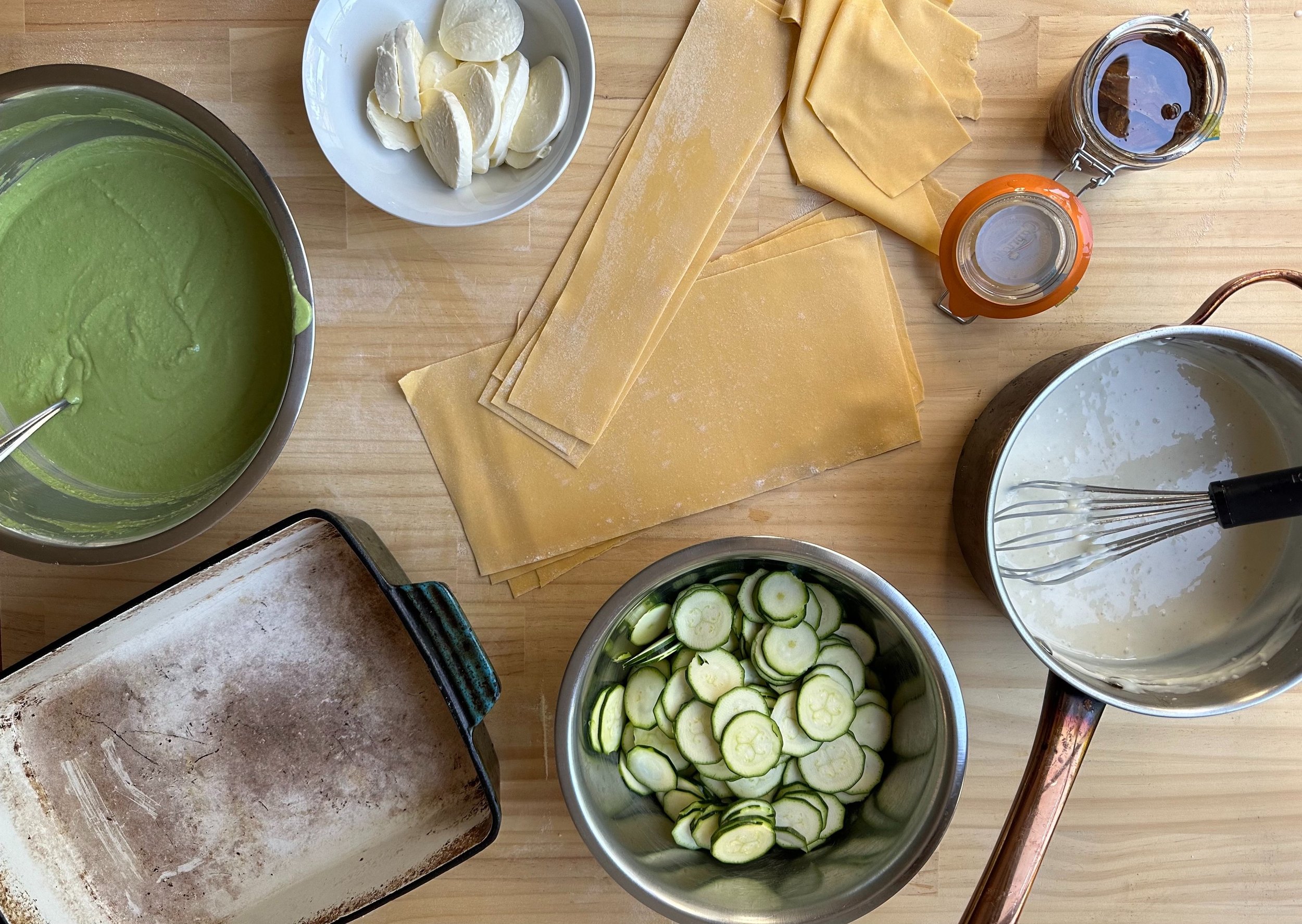
PASTABOIS
What is pastabois?
PASTABOIS
〰️
PASTABOIS 〰️
In the year of 2020 two young men by the name of Conor and Max made it into the last stage of Masterchef SZN 13 auditions. For this audition week that was filmed for episode one and two, they would be paired together in the same hotel room. Luckily they got along, very well. It was bromance at first sight.
That year Conor managed to get his apron and compete on SZN 13, but without giving up Max would go back and get his apron in SZN 14. But it did not matter because the two of them had already bonded over their love of pasta.
After cooking pasta many times together they thought they would challenge themselves and try to make every pasta that ever existed and film it. Not very achievable, but definitely a lot of fun and so PASTABOIS began.
The whole point of the venture was to have a reason to catch up and make pasta and drink wine and it has continued to be this. We continue to create these recipes because its so much fun for us to and who doesn’t love pasta and wine with a mate. So we hope you enjoy the recipes as much as we enjoy making (and eating) them.
Big Love, Conor & Max
VOLUMES
-

VOLUME XVIII: Chitarra & Prawns
Chitarra pasta hails from the beautiful region of Abruzzo in Italy. Named after the traditional wooden instrument it resembles (specifically a guitar, or "chitarra" in Italian), it’s crafted using a special tool called a "chitarra," which is made up of strings stretched over a wooden frame, the dough is pressed through these strings to create long, thin strands.
-
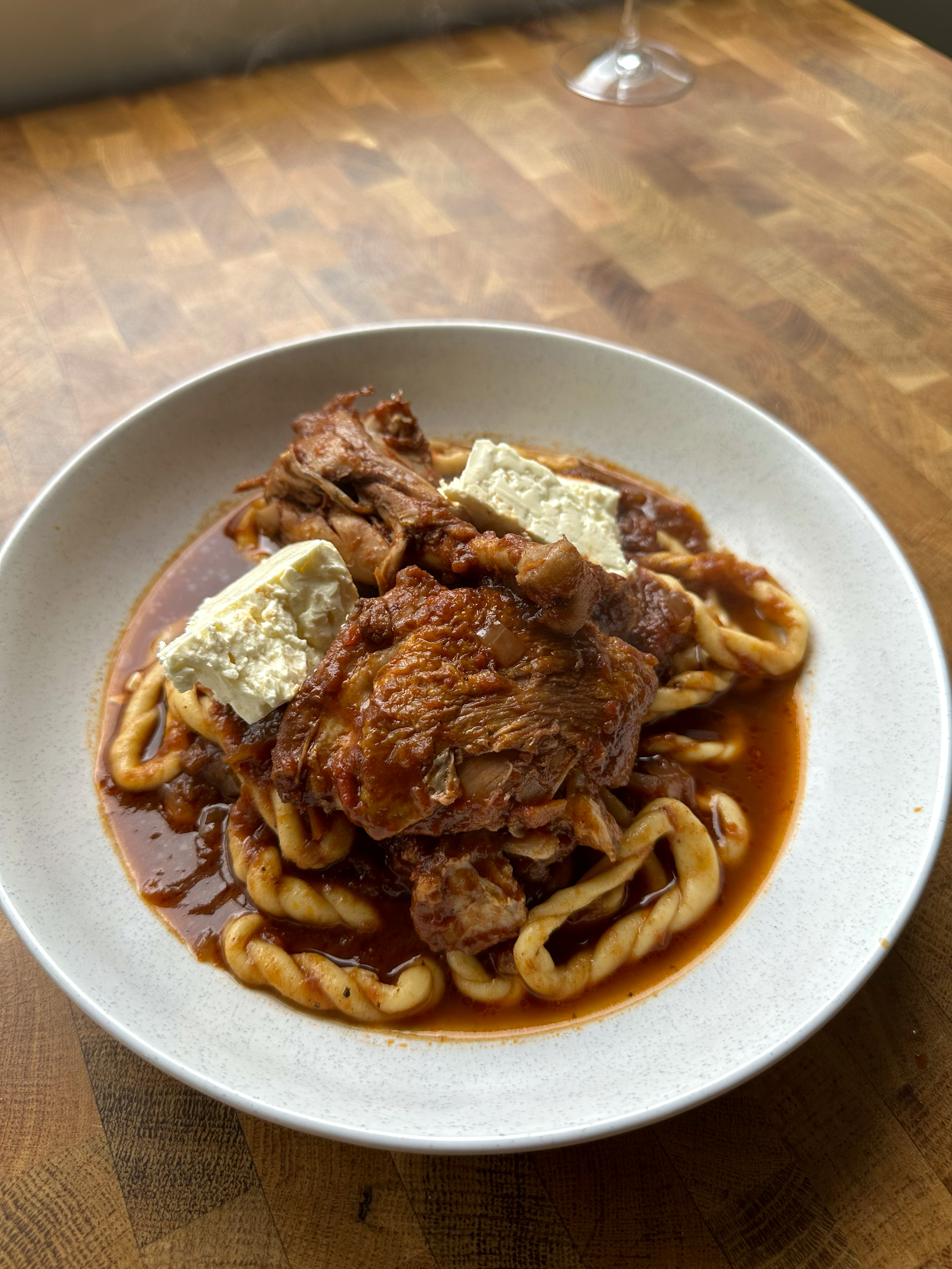
VOLUME XVII: Lorighittas & Kota Kokkinisto
Lorighitas, the delightful pasta shape that looks like little twisted rings, hails from Sassari, a charming city in Sardinia, Italy. This pasta's name is derived from the local dialect, meaning "little braids," which perfectly captures its whimsical appearance.
-

VOLUME XVI: Reginette, Bone Marrow & Confit Garlic Sauce
Reginette is a beautiful ribbon-like pasta that hails from the Campania region in southern Italy. Its name is derived from "regina," meaning "queen" in Italian, which reflects its elegantly wavy edges and royal allure.
-
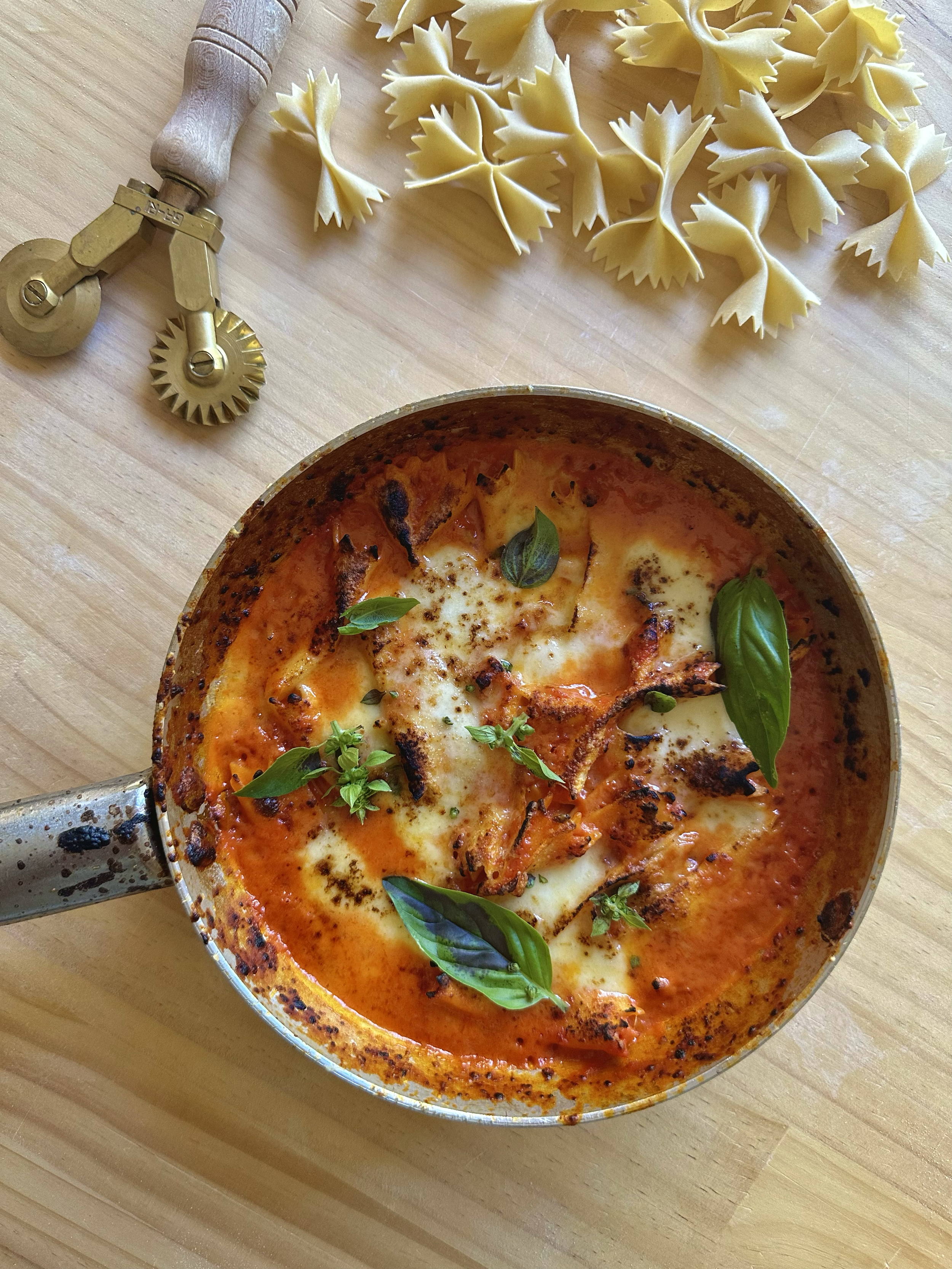
VOLUME XV: Baked Cheesy Farfalle
Farfalle, those delightful little pasta shapes often likened to bowties, originated in northern Italy. The exact birthplace is widely believed to be the Emilia-Romagna region, where this pasta was traditionally made from the dough of eggs and flour.Farfalle's name derives from the Italian word "farfalla," meaning butterfly.
-

VOLUME XIV: Tagliolini alle Vongole
Tagliolini is a type of long, thin pasta that hails from the beautiful region of Emilia-Romagna in Italy, specifically linked to the city of Bologna. This delicate pasta is made from egg and flour, and it’s typically thinner than its sibling, tagliatelle.
-

VOLUME XIII: Busiate & Osso Buco
Busiate is a delightful spiral-shaped pasta that hails from the beautiful island of Sicily, Italy. This pasta is particularly associated with the western part of the island, especially the town of Trapani. Traditionally, busiate was handmade using a thin rod or a knitting needle to roll and shape the pasta into its distinctive corkscrew form.
-

VOLUME XII: Pork Tortelloni. Chilli & Tarragon Butter Sauce
Tortelloni, the delightfully plump cousin of the well-known tortellini, hails from the beautiful region of Emilia-Romagna in northern Italy. The name "tortelloni" itself suggests a resemblance to "tortella," which means to twist, aptly describing the way this pasta is shaped. Historically, it’s believed that tortelloni came about as a larger iteration of tortellini, catering to those who prefer more filling in their pasta.
-

VOLUME XI: Green Lasagna
The pasta shape lasagna originated in ancient Greece, where a dish called "laganon" was created. This dish consisted of layers of pasta sheets, much like the modern lasagna we know today, and was often combined with meat and sauce. However, it was the Italians who really took laganon and transformed it into the glorious, cheesy, and saucy lasagna we love.
-
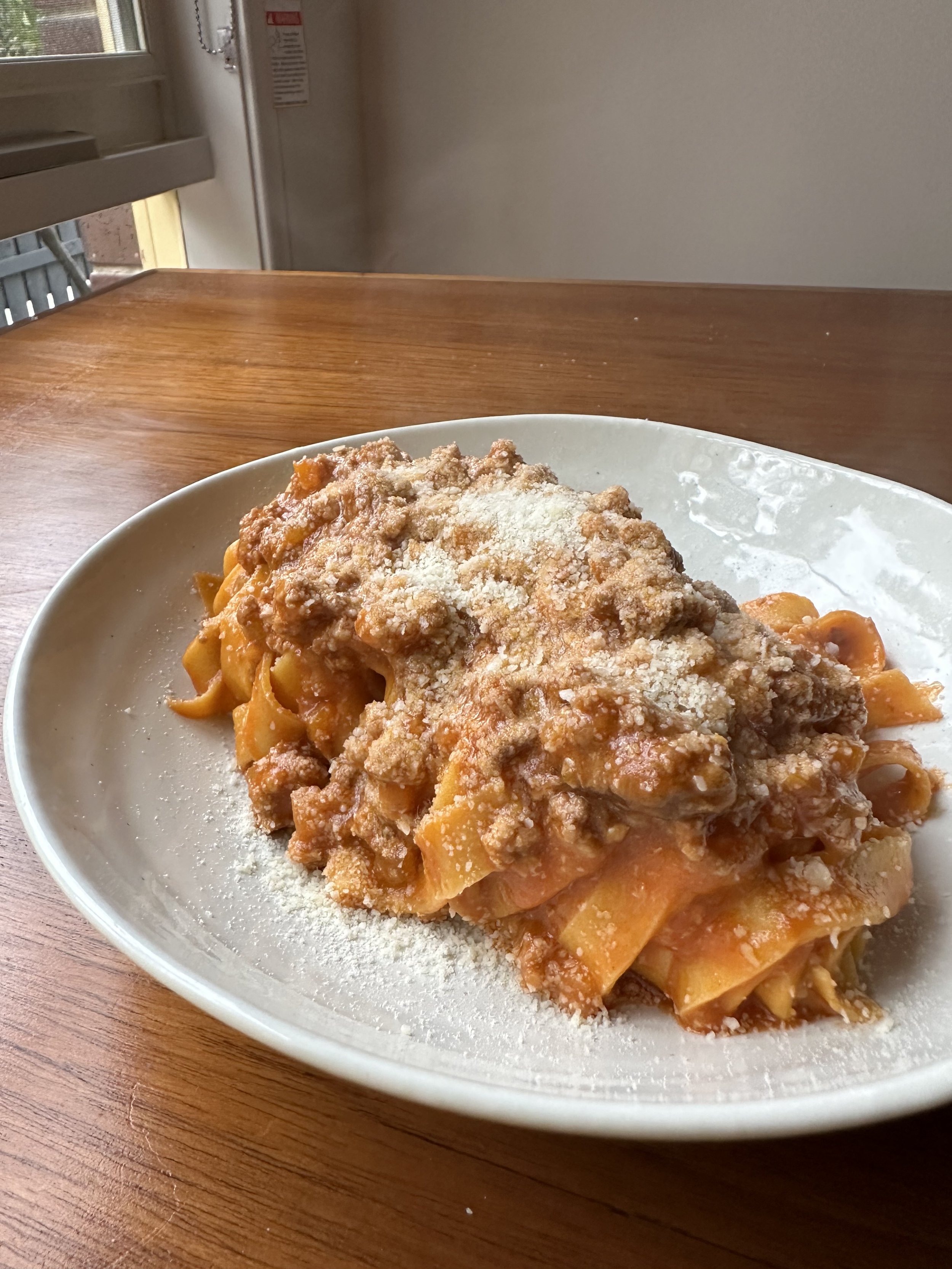
VOLUME X: Tagliatelle & Bolognese
Tagliatelle originated from the Emilia-Romagna and Marche regions of Northern Italy. This delightful pasta is traditionally made from flour and eggs, rolled out and cut into long, flat ribbons. The name "tagliatelle" derives from the Italian verb "tagliare," which means "to cut," highlighting the method of preparation. Its history dates back to the 15th century, with references linking it to the famous wedding feast of Lucretia Borgia in 1487.
-
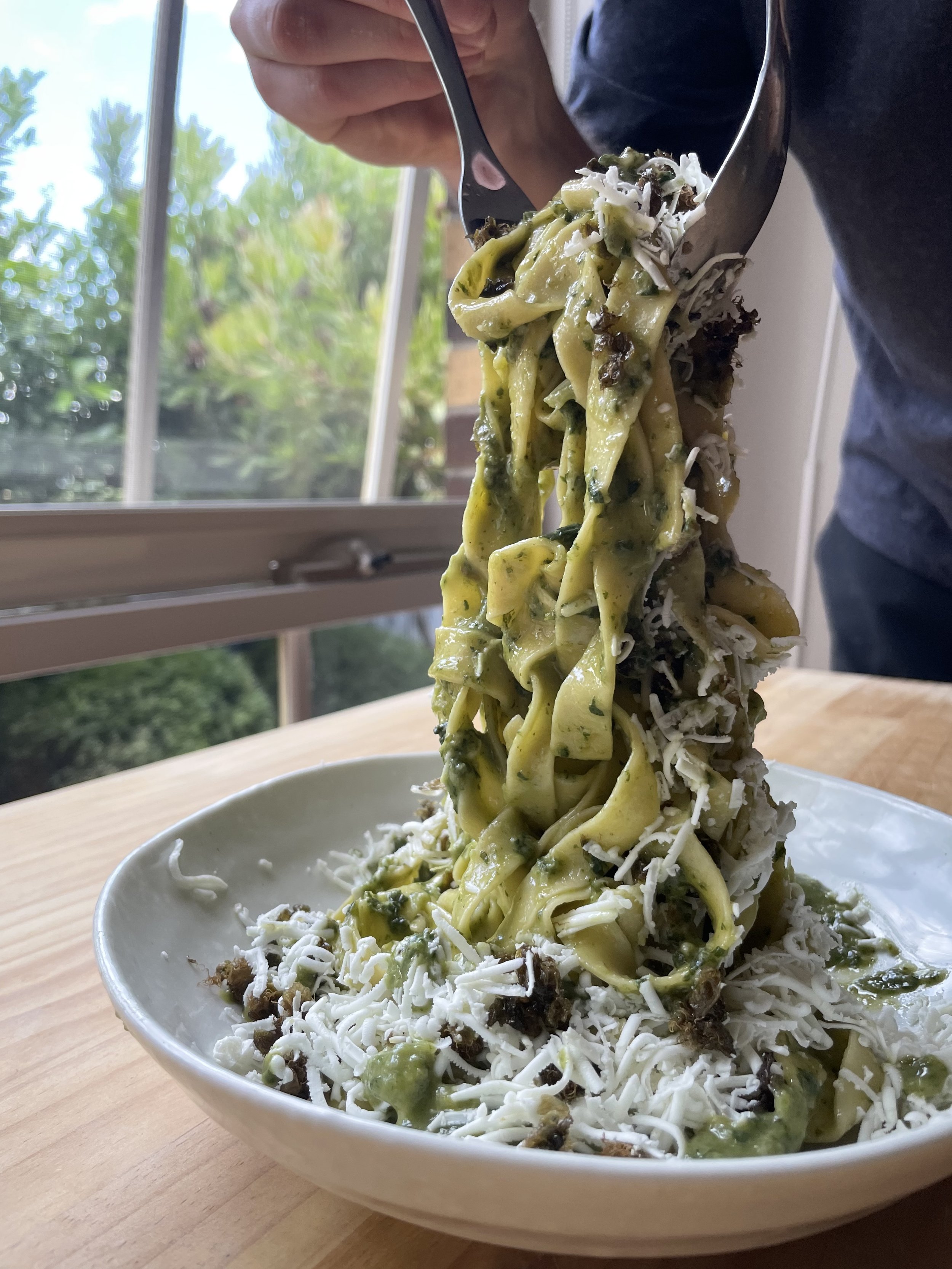
VOLUME IX: Hilopites & Salmoriglio
Hilopites hails from the heart of Greece, particularly associated with the regions of Epirus and Thessaly. Typically, hilopites are flat, slightly thicker than your average pasta, and often cut into squares or rectangles, which allows them to hold onto sauces and flavours beautifully.
-

VOLUME VIII: Squash & Ricotta Agnolotti. Butter Sauce & Bay Leaf Oil
Agnolotti is a delightful pasta filled with various fillings, originates from the Piedmont region of northern Italy. This distinctive shape mimics the traditional dumplings of the area, often featuring a crescent or half-moon design. Agnolotti were originally created as a means to utilise leftover meat and vegetables, showcasing the region's resourcefulness in cooking.
-
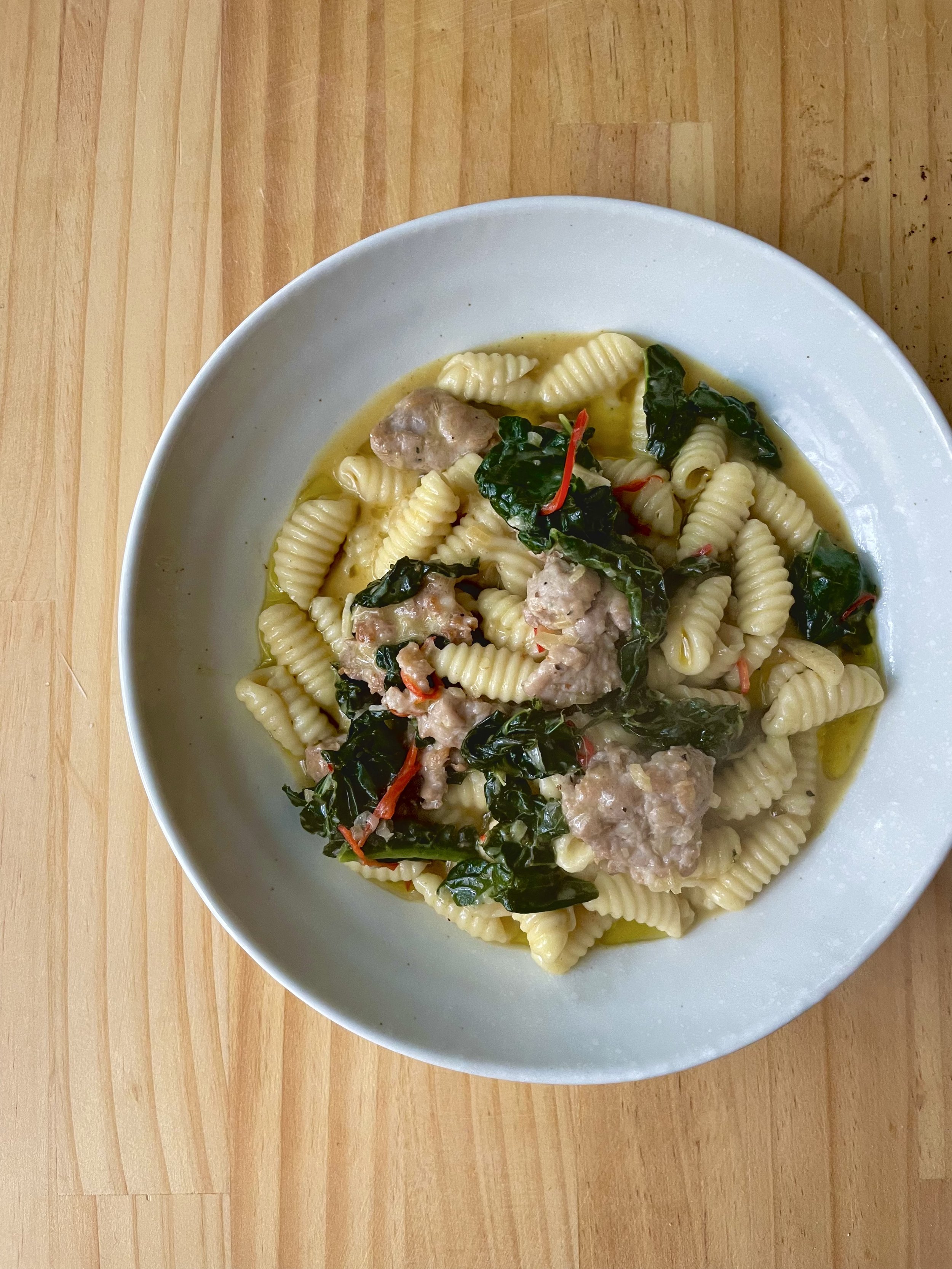
VOLUME VII: Cavatelli. Pork Sausage & Tuscan Kale
Cavatelli originates from Southern Italy, particularly from the regions of Apulia (Puglia) and Calabria. This delightful pasta shape resembles small shells or folded pillows and is traditionally made from a simple dough of semolina flour and water. Its name comes from the Italian word "cavato," which means "to scoop out," reflecting the way these little beauties are crafted.
-
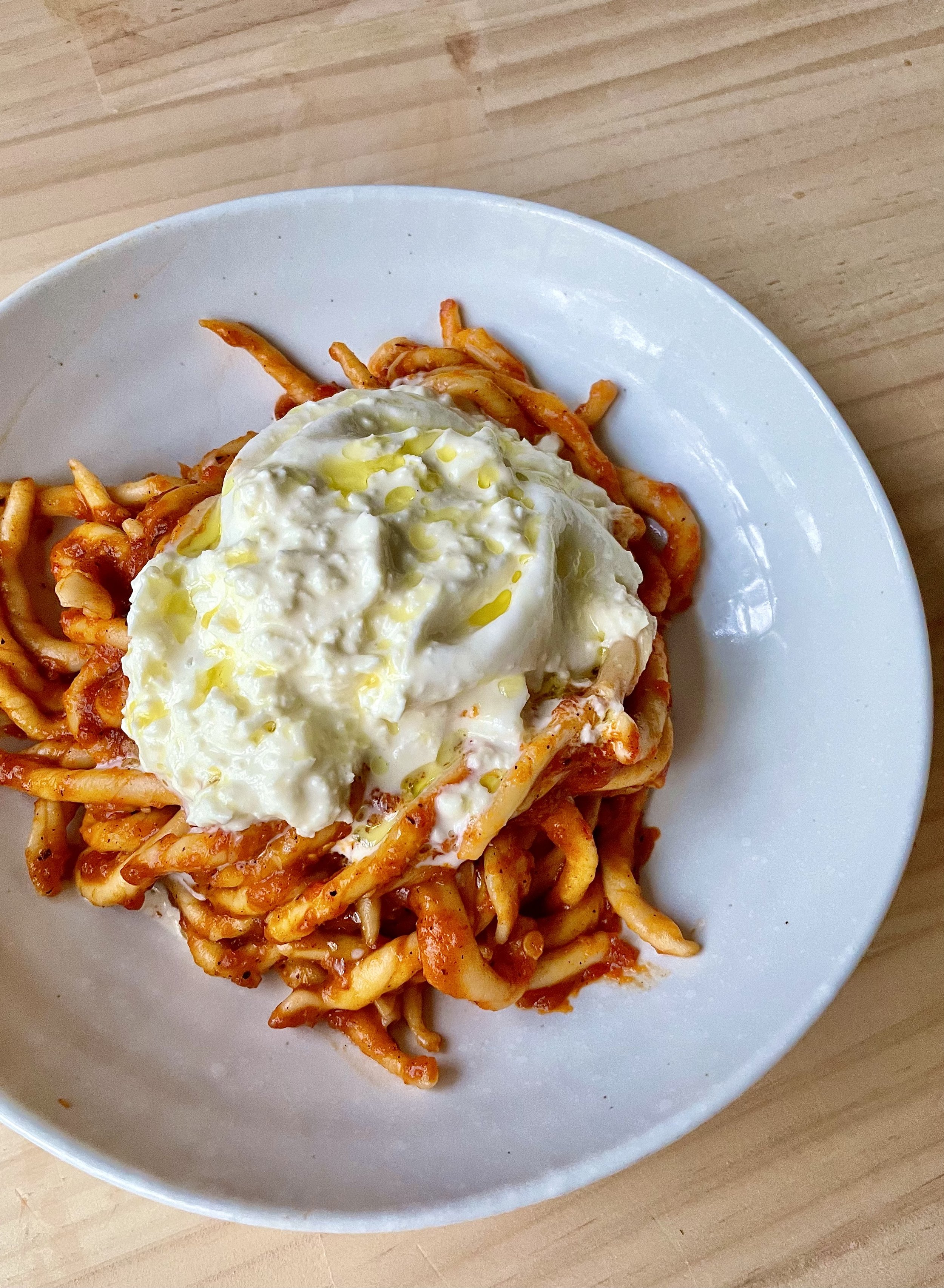
VOLUME VI: Strozzapreti. Charred Pepper Sauce
Strozzapreti, which translates to "priest strangler" in Italian, hails from the beautiful region of Emilia-Romagna, though its origins can be traced across various parts of Italy. It’s believed to have been created by the hands of home cooks in the Apennines, particularly in the provinces of Bologna and Forlì-Cesena. The shape itself is characterised by its twisted, elongated form resembling a small rope, which allows it to cling beautifully to sauces.
-
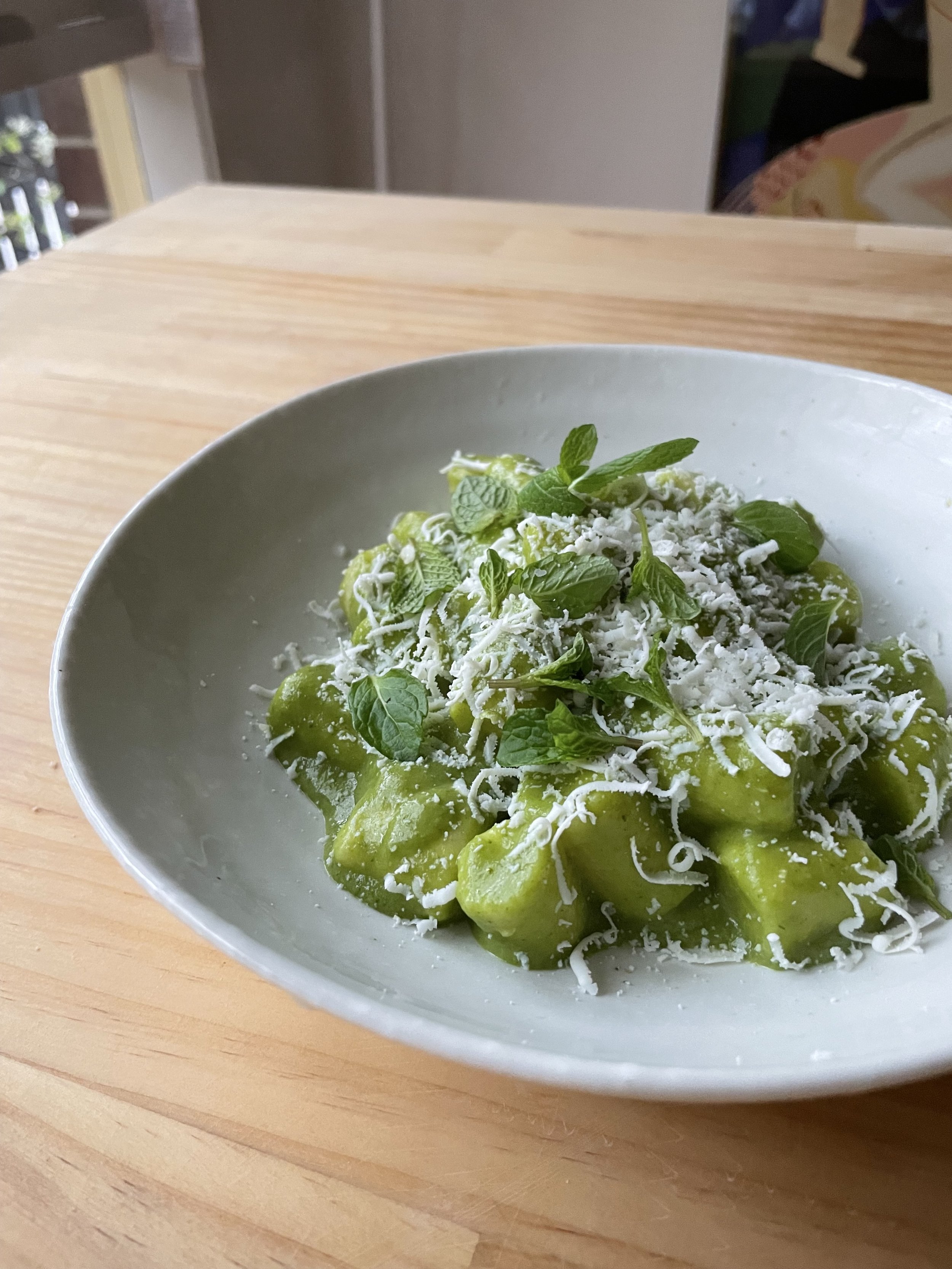
VOLUME V: Ricotta Gnocchi. Broadbean, pea & Mint Sauce
Ricotta gnocchi originates from Italy, specifically the regions of Tuscany and Lazio. This delightful dish is a variation of traditional potato gnocchi, substituting ricotta cheese for potatoes, resulting in a lighter and fluffier texture.
-

VOLUME IV: Rigatoni alla Vodka
Rigatoni is a l tube-shaped pasta and hails from the beautiful region of Lazio in Italy, particularly around Rome. Its name comes from the Italian word "rigare," which means "to stripe," referring to the ridges that run along its surface. These ridges are not just for show; they help sauce cling to the pasta. It can be found in a variety of traditional Italian dishes, such as "Rigatoni alla Norma," a classic featuring eggplant and tomato sauce.
-
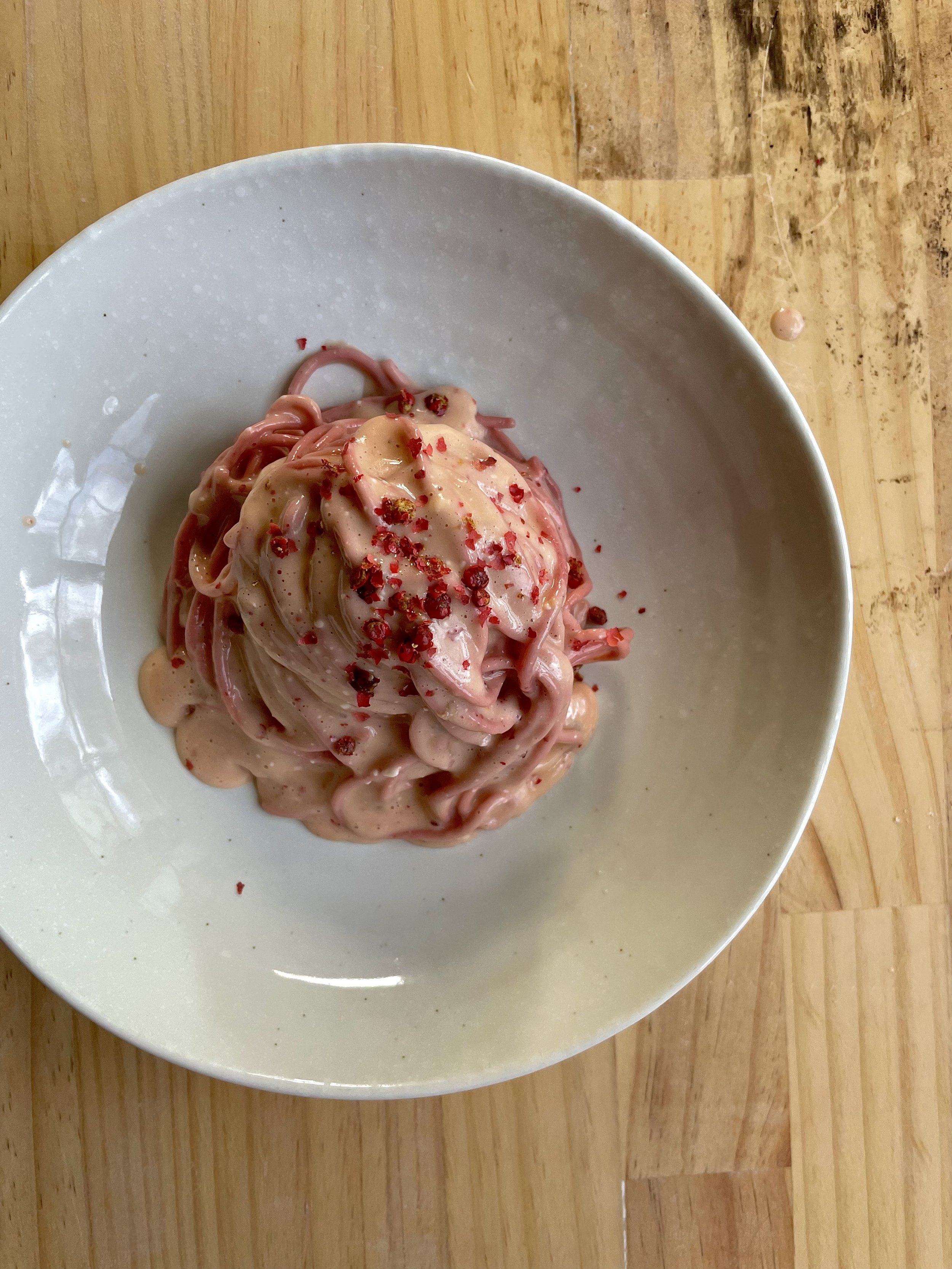
VOLUME III: Cacio e Pink Pepe
Cacio e pepe originates from the Italian region of Lazio, specifically from Rome. This classic dish, which translates to "cheese and pepper," is a staple of Roman cuisine. Traditionally, cacio e pepe is made with just three ingredients: high-quality pasta, Pecorino Romano cheese, and freshly cracked black pepper. The dish has a long history, often associated with shepherds who needed a quick and hearty meal while tending to their flocks in the hills surrounding Rome.
-

VOLUME II: Maltagliati Con Funghi
Maltagliati, which means "badly cut" in Italian, hails from the Emilia-Romagna and Tuscany regions of Italy. This rustic pasta shape is traditionally made from the leftover scraps of pasta dough after cutting other shapes, hence its less-than-perfect appearance.
-
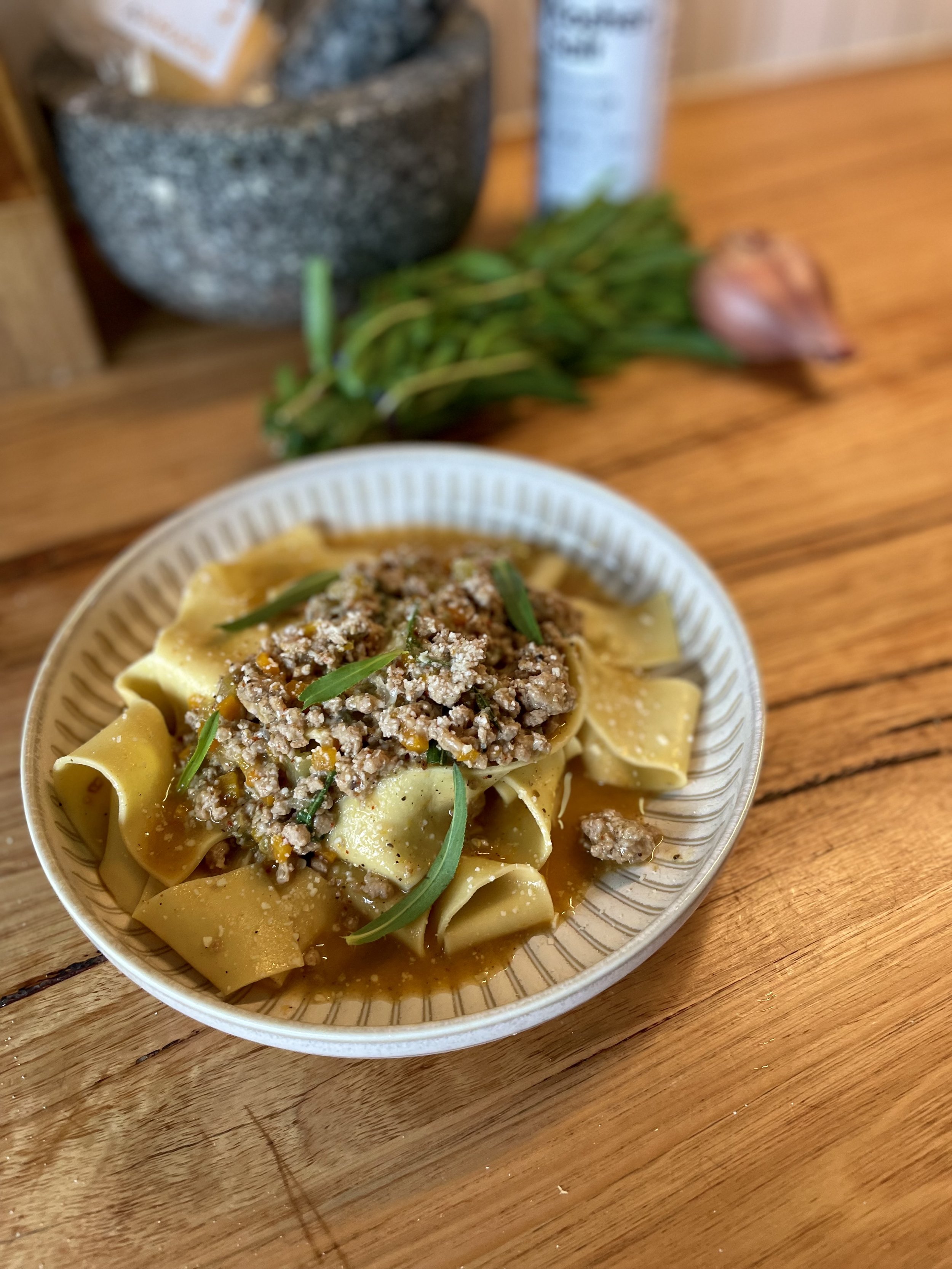
VOLUME I: Papperdelle & White Ragu
Pappardelle, the luscious, broad ribbon-like pasta, hails from the beautiful region of Tuscany in Italy. Its name is derived from the Italian verb "pappare," meaning "to gobble up," which is quite fitting because it’s is hard to resist onee you get going. Traditionally, pappardelle is served with wild game sauces or rich ragùs, making it a staple in rustic Tuscan cooking.
